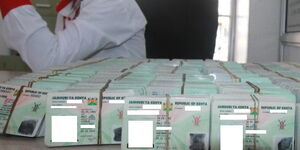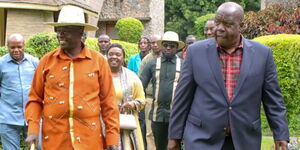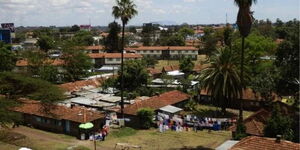The Mombasa County Government has warned residents of the outbreak of the Chikungunya disease in the county.
So far, according to Deputy Manager Emergency Operations Center in Mombasa, Fatma Ali, in a press briefing on Wednesday, June 4, 25 people in the county have tested positive for the disease out of the 45 samples that were analysed by the Kenya Medical Research Institute (KEMRI).
According to the county government, Mvita, Nyali, Likoni, and Kisauni Sub Counties have been the most affected by the disease. But you may ask, what is this Mysterious and rather unfamous disease?
Chikungunya is a mosquito-borne viral disease caused by the Chikungunya Virus (CHIKV) and is transmitted by infected female Aedes aegypti and Aedes albopictus mosquitoes. The disease was first identified in Tanzania back in 1952.
Unlike other mosquitoes, such as the female Anopheles mosquito, which transmits malaria and typically bites at night, these two mosquitoes stand out because they prefer to bite during the day.
The disease is self-limiting and can resolve on its own; however, young children, old people, or those with underlying medical conditions are often at risk of organ damage or succumbing once they get infected with the disease.
According to the World Health Organisation (WHO), once one recovers, chances are that the individual will be immune to future infections of Chikungunya.
Symptoms of the disease often surface between 4-8 days after one has been bitten by the mosquito. Some of the earliest symptoms include severe joint pain, which can last for days, months, or even years.
Actually, the name "Chikungunya" is a word derived from the Kimakonde language of southern Tanzania, which means “that which bends up” and describes the bent posture of people infected with the disease.
Other symptoms of Chikungunya include fever, joint swelling, muscle pain, headache, nausea, fatigue, and rash.
There is no specific treatment of the disease according to the WHO, however, clinical management such as addressing fever and joint pain with anti-pyretics and optimal analgesics, drinking plenty of fluids, and general rest are vital to reduce the severity of the disease once it strikes.
Furthermore, Paracetamol or acetaminophen is recommended for pain relief and reducing fever in patients.
So far, two Chikungunya vaccines have received regulatory approvals for use in populations at risk in several countries, but the vaccines are not widely available.
People living in or visiting areas with the Chikungunya-transmitting mosquitoes are often advised to wear clothing that minimises skin exposure or apply repellants, containing DEET, IR3535, or icaridin to the exposed skin.
Additionally, individuals in these areas are encouraged to also use window and door screens to prevent mosquitoes from entering their homes, in addition to using mosquito nets to protect people who sleep during the day, including children, sick patients, and older people.
The Mombasa county official attributed the sudden surge of the disease to the ongoing rains, which provide the perfect conditions for the mosquitoes to breed rapidly.
Ali stressed the need for a collaborative effort between the county government and Mombasa residents in destroying the breeding sites of the mosquitoes by ensuring that the environment is clean.
She has assured that the county government is currently conducting fumigation and spraying of houses across the country, in addition to conducting community awareness campaigns to equip residents with knowledge on how to deal with the disease.
"It is our responsibility to ensure that our environment is clean by removing stagnant water, and this will reinforce the efforts that the county government is currently undertaking to control the disease," Ali said.












